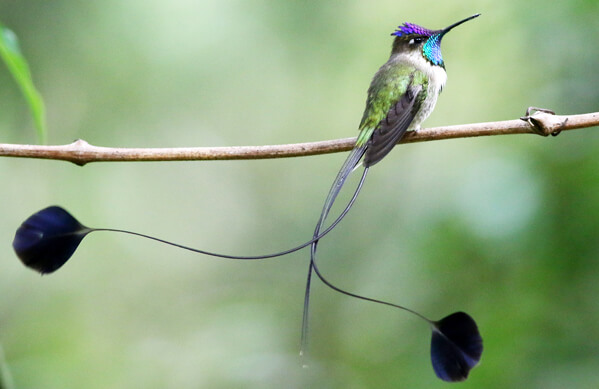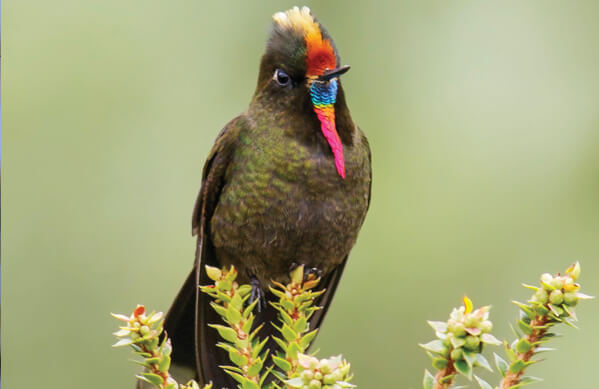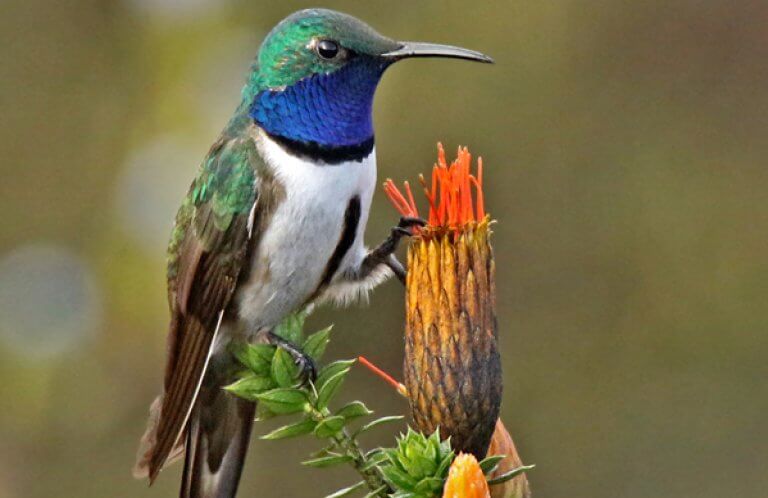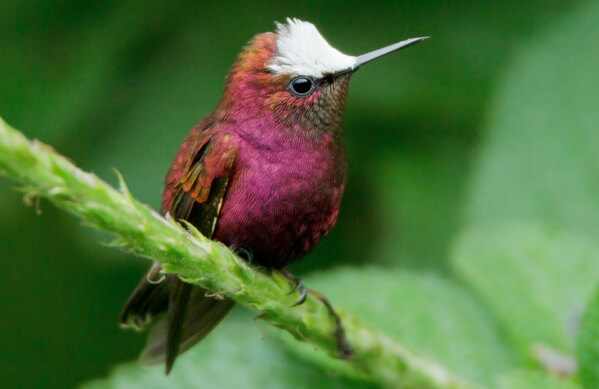About
The Marvelous Spatuletail, like many hummingbird species including the Black-eared Fairy and Rainbow-bearded Thornbill, has a name that is both charming and descriptive.
This beautiful little hummingbird shines in shades of white, green, and bronze; the male also sports vivid blue crest feathers, a brilliant turquoise gorget, and a black line on its white underparts.
The Marvelous Spatuletail's unique tail has only four feathers — which the male uses as a prop in amazing performances.
Songs and Sounds
During the first part of his display, the male Spatuletail bounces back and forth across a horizontal twig at high speed, then hovers in front of the female while furiously waving his spatules about, making snapping and chittering sounds all the while. Watch this amazing display here!
Listen to the Marvelous Spatuletail here:
Breeding and Feeding
Specialized Spatules
The male Marvelous Spatuletail truly lives up to its name. Its tail is edged with two long wire-like outer feathers that cross each other and end in large violet-blue discs or "spatules." These specialized feathers grow to three or four times the bird's body length, and the male can move each one independently. Tail length varies with age. These remarkable feathers are used during the male's courtship display.
Male Spatuletails perform their marvelous display at leks, or communal display areas, where females visit to select a mate. Other hummingbird species such as the Snowcap and Chilean Woodstar use this type of system.
After mating at the lek, a female Spatuletail is on her own. She builds her nest out of plant fibers and moss, placing it on a low, horizontal branch, then lines it with soft materials and strengthens it with spider webs and other sticky material. The average clutch consists of two white eggs, which the female alone incubates. The young are born blind and featherless, but grow quickly. They leave the nest after only a week to 10 days.
Flower Foraging
Marvelous Spatuletails forage low at the edges of a wide variety of flowering shrubs, many of which rely on the bird for pollination. Like the Juan Fernández Firecrown and Blue-throated Hillstar, spatuletails often perch while feeding on nectar, and visit nectar sources in sequence along a regularly traveled route, a feeding strategy known as trap-lining.
Male Spatuletails establish feeding territories, where they chase away other males and large insects such as bumblebees that might try to feed alongside them. In turn, they are dominated by larger, more aggressive hummingbirds, such as the Sparkling Violetear and Chestnut-breasted Coronet.
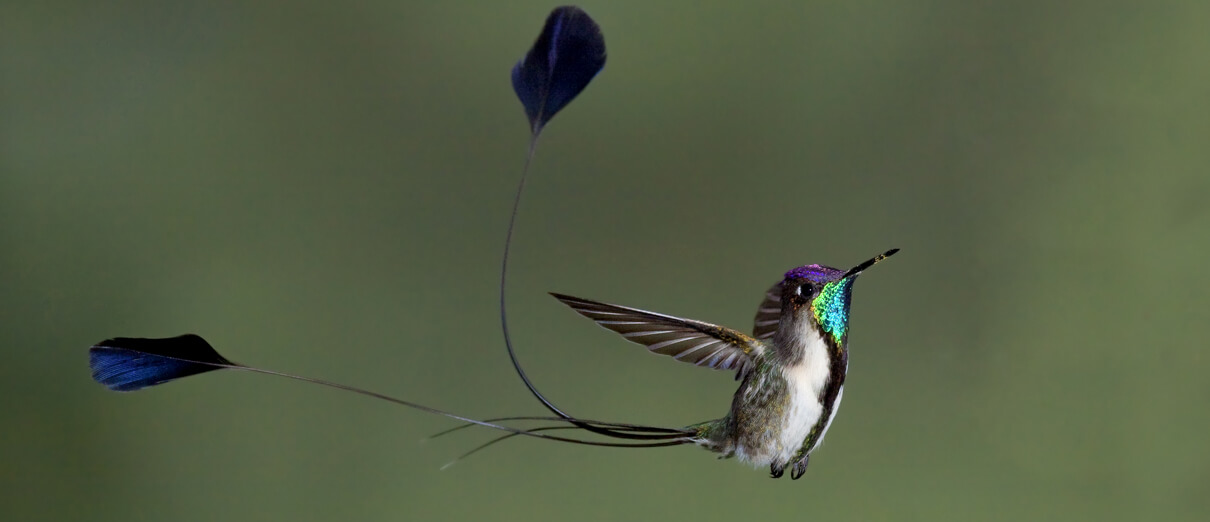
Region and Range

The only member of the genus Loddigesia, the species was first described in 1835. It's only found in the Rio Utcubamba Valley in northern Peru.
Conservation
Hunted Hummingbirds
The main threat to this hummingbird is habitat destruction, caused by burning for agriculture and illegal wood-cutting. Another danger is illegal hunting: Male Spatuletails may be targeted by hunters using slingshots, as some believe that this hummingbird's heart is an aphrodisiac. The magnitude of this threat is unknown.
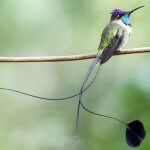
Help support ABC's conservation mission!
ABC and Asociación Ecosistemas Andinos (ECOAN) worked to establish the Huembo conservation easement in 2005 as a refuge for the Marvelous Spatuletail. ABC and ECOAN continue work with local communities to reforest this area, which is an Alliance for Zero Extinction site, as well as adjacent private lands.
Get Involved
Many of the rarest bird species in the Western Hemisphere remain relatively unknown. You can learn more about these birds and the threats they face by signing up for ABC's Bird of the Week email series, which frequently highlights these fascinating birds.
American Bird Conservancy and our partners throughout Latin America and the Caribbean have created and expanded more than 100 bird reserves, which protect upward of 1.1 million acres of vital habitat. Together, we've planted more than 6.8 million trees, helping to restore degraded and damaged habitat. You can help us continue to protect endangered birds by making a gift today.





































